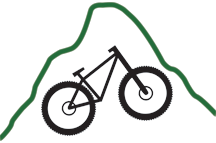You Can Stop ‘‘Normal’’ Aging
I found this article very inspiring. I hope you do too!
You Can Stop ‘‘Normal’’ Aging
From your body’s point of view, “normal” aging isn’t normal at all. It’s a choice you make by the way you live your life. The other choice is to tell your cells to grow—to build a strong, vibrant body and mind.
Let’s have a look at standard American aging. Barbara D. had a baby when she was 34, gave up exercise and gained 50 pounds. Exhausted and depressed, Barbara thought youth, energy and optimism were all in her rearview mirror. Jon M., 55, had fallen even farther down the slippery slope. He was stuck in the corporate world of stress, long hours and doughnuts. At 255 pounds, he had knees that hurt and a back that ached. He developed high blood pressure and eventually diabetes. Life was looking grim.
Jon and Barbara weren’t getting old; they had let their bodies decay. Most aging is just the dry rot we program into our cells by sedentary living, junk food and stress. Yes, we do have to get old, and ultimately we do have to die. But our bodies are designed to age slowly and remarkably well. Most of what we see and fear is decay, and decay is only one choice. Growth is the other.
After two years of misery, Barbara started exercising and is now in the best shape of her life. She just finished a sprint triathlon and, at 37, feels like she is 20. Jon started eating better and exercising too—slowly at first, but he stuck with it. He has since lost 50 pounds, the pain in his knees and back has disappeared, and his diabetes is gone. Today, Jon is 60 and living his life in the body of a healthy 30-year-old. He will die one day, but he is likely to live like a young man until he gets there.
The hard reality of our biology is that we are built to move. Exercise is the master signaling system that tells our cells to grow instead of fade. When we exercise, that process of growth spreads throughout every cell in our bodies, making us functionally younger. Not a little bit younger—a lot younger. True biological aging is a surprisingly slow and graceful process. You can live out your life in a powerful, healthy body if you are willing to put in the work.
Let’s take a step back to see how exercise works at the cellular level. Your body is made up of trillions of cells that live mostly for a few weeks or months, die and are replaced by new cells in an endless cycle. For example, your taste buds live only a few hours, white blood cells live 10 days, and your muscle cells live about three months. Even your bones dissolve and are replaced, over and over again. A few key stem cells in each organ and your brain cells are the only ones that stick around for the duration. All of your other cells are in a constant state of renewal.
You replace about 1% of your cells every day. That means 1% of your body is brand-new today, and you will get another 1% tomorrow. Think of it as getting a whole new body every three months. It’s not entirely accurate, but it’s pretty close. Viewed that way, you are walking around in a body that is brand-new since Christmas—new lungs, new liver, new muscles, new skin. Look down at your legs and realize that you are going to have new ones by the Fourth of July. Whether that body is functionally younger or older is a choice you make by how you live.
You choose whether those new cells come in stronger or weaker. You choose whether they grow or decay each day from then on. Your cells don’t care which choice you make. They just follow the directions you send. Exercise, and your cells get stronger; sit down, and they decay.
This whole system evolved over billions of years out in nature, where all animals face two great cellular challenges: The first is to grow strong, fast and fit in the spring, when food abounds and there are calories to fuel hungry muscles, bones and brains. The second is to decay as fast as possible in the winter, when calories disappear and surviving starvation is the key to life. You would think that food is the controlling signal for this, but it’s not. Motion controls your system.
Though we’ve moved indoors and left that life behind, our cells still think we’re living out on the savannah, struggling to stay alive each day. There are no microwaves or supermarkets in nature. If you want to eat, you have to hunt or forage every single day. That movement is a signal that it’s time to grow. So, when you exercise, your muscles release specific substances that travel throughout your bloodstream, telling your cells to grow. Sedentary muscles, on the other hand, let out a steady trickle of chemicals that whisper to every cell to decay, day after day after day.
Men like Jon, who go from sedentary to fit, cut their risk of dying from a heart attack by 75% over five years. Women cut their risk by 80%—and heart attacks are the largest single killer of women. Both men and women can double their leg strength with three months of exercise, and most of us can double it again in another three months. This is true whether you’re in your 30s or your 90s. It’s not a miracle or a mystery. It’s your biology, and you’re in charge.
The other master signal to our cells—equal and, in some respects, even more important than exercise—is emotion. One of the most fascinating revelations of the last decade is that emotions change our cells through the same molecular pathways as exercise. Anger, stress and loneliness are signals for “starvation” and chronic danger. They “melt” our bodies as surely as sedentary living. Optimism, love and community trigger the process of growth, building our bodies, hearts and minds.
Men who have a heart attack and come home to a family are four times less likely to die of a second heart attack. Women battling heart disease or cancer do better in direct proportion to the number of close friends and relatives they have. Babies in the ICU who are touched more often are more likely to survive. Everywhere you look, you see the role of emotion in our biology. Like exercise, it’s a choice.
It’s hard to exercise every day. And with our busy lives, it’s even harder to find the time and energy to maintain relationships and build communities. But it’s worth it when you consider the alternative. Go for a walk or a run, and think about it. Deep in our cells, down at the level of molecular genetics, we are wired to exercise and to care. We’re beginning to wake up to that as a nation, but you might not want to wait. You might want to join Barbara, Jon and millions of others and change your life. Start today. Your cells are listening.
Dr. Henry S. Lodge is on the faculty of Columbia Medical School and is co-author of “Younger Next Year” (Workman).
Need help getting motivated to exercise? Coach Sally can help you!
Subscribe to:
Post Comments (Atom)




No comments:
Post a Comment